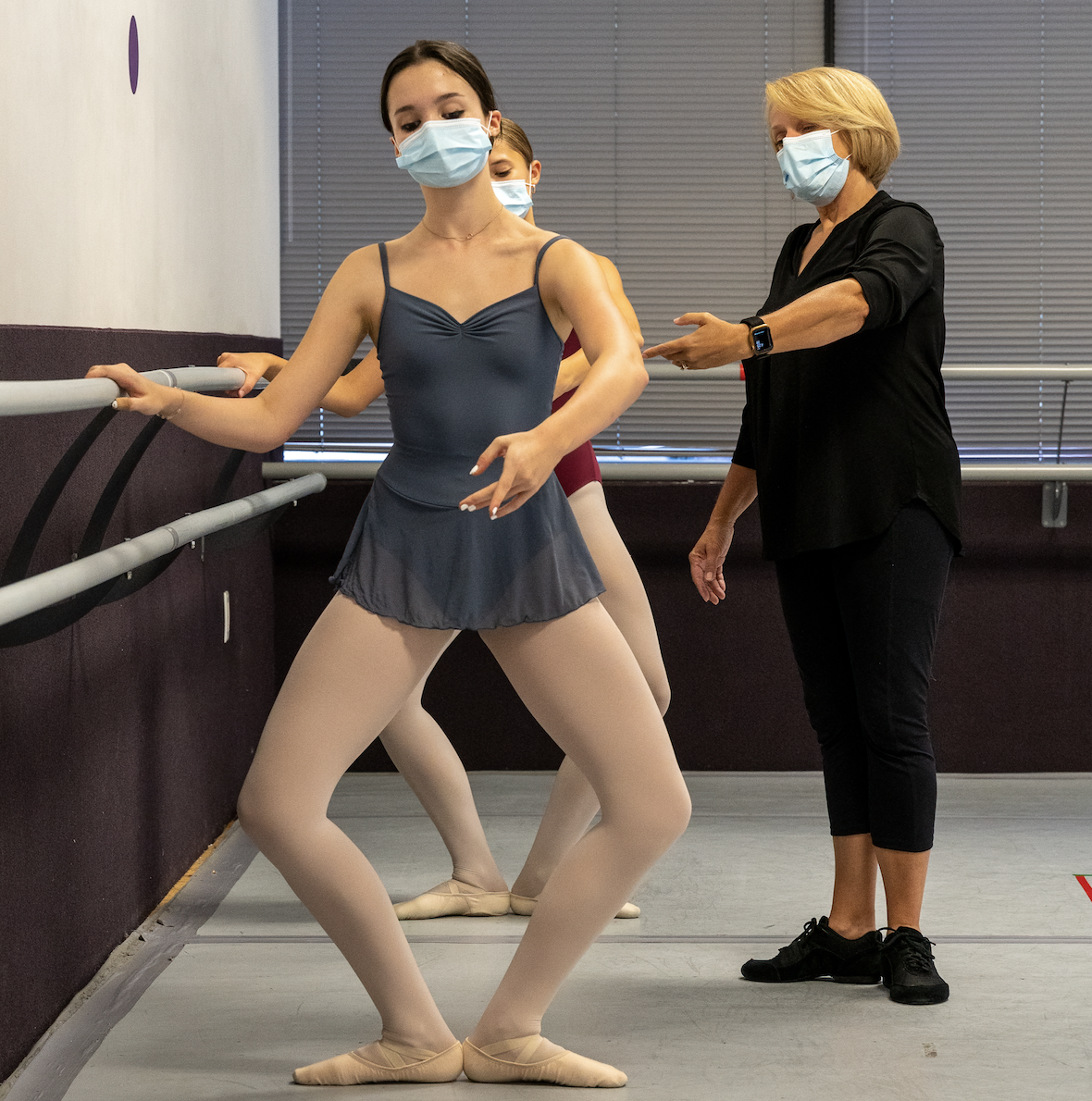5 Tips for Getting Deeper, Juicier, More Powerful Pliés
A deep, juicy plié isn’t just delicious to watch. “It’s how we absorb shock,” says Elisa LaBelle, a physical therapist who works with dancers at NYU Langone’s Harkness Center for Dance Injuries. “It’s our spring, our power.” And it forms the basis for everything from dynamic jumps to smooth transitions to safe floorwork.
But achieving a plié that’s both functional and has that luscious, effortless quality can be more difficult than it appears. Use these tips to deepen this foundational step.
Start With Alignment
“In terms of plié, tension is one of your biggest enemies,” says Gretchen Vogelzang, director of the Greater Washington Dance Center, where she teaches ballet. One source of this tension, Vogelzang says, is often misalignment: “If the pelvis is not aligned properly, everything has to grip to hold on.”
Assess your plié from top to bottom to make sure you are lined up correctly: Is your pelvis in a neutral position? Is your core engaged? Are knees tracking over toes? Are all 10 toes on the floor, with the arch of each foot supported? Vogelzang says that addressing misalignment higher up the kinetic chain often helps with problems lower down, and allows dancers to plié with more freedom.
Loosen Up
Tightness in overworked muscles often limits dancers from reaching their plié’s potential, says LaBelle. She often sees this in dancers who skip or rush through their warm-up (which should include dynamic stretches) and cooldown (which should be at least 10 to 15 minutes long and include self-release and deeper static stretching).
Make sure what you’re doing outside the studio is helping keep your muscles pliable too: Wearing supportive footwear is essential, says LaBelle, as is getting enough rest and hydration.

Work With What You Have
Sometimes a plié’s depth can be limited by anatomical factors, like a short Achilles tendon or ankle impingement. Ballet dancers often face a particular dilemma, says LaBelle: They have lots of plantar flexion, which helps them to get on pointe, but in turn they may have less dorsiflexion range of motion, which is needed for a deep plié.
Even when you’ve reached the limits of the shape of your plié, there’s still much you can do to get that juicy quality—and create the illusion that your plié is deeper than it actually is.
One tactic: Use the strength of your quadriceps to modulate the speed of your plié’s descent, says Vogelzang, playing with the idea of resisting gravity. She also recommends coordinating your exhale with your plié and masking a short plié with the upper body. “It’s one thing to come down suddenly and abruptly,” she says, “but it’s another thing if you come down and let your arms continue the motion.”
Just don’t resort to unsafe cheats, like lifting your heels at the bottom of the plié, says LaBelle.
Use New Words and Images
Using the right imagery is key to attaining that supple quality. You may want to start with what you call the step itself. Los Angeles–based Gaga teacher Anna Long sometimes finds that simply saying “bending at the knees” instead of “plié” can help dancers approach it with fresh eyes. She also uses images like accepting the weight of your legs or bending at the hips as if you’re sitting in a soft chair.
One word you may want to expel from your plié vocabulary: push. “When we use words like ‘push,’ muscularly it means we’re probably gripping,” says LaBelle. She encourages dancers to instead think of words like “softening” and “folding.”
Find Pleasure in Plié
Dancers plié thousands of times a year, says Long, so they might as well enjoy the experience. This is especially true at the beginning of class, says LaBelle, pointing out that doing pliés at the barre is a dynamic stretch in itself and should be treated as such. “You want to work in that nice springy range that doesn’t feel forced,” she says. “It’s a critical part of warm-up—
it can activate the glutes, the quads, the hamstrings, bringing all the big players into readiness for class or performance.”
For Long, plié is an opportunity to get into her body. “I research how bending the knees connects me to my body as
a whole,” she says. “Most of us start our day with plié—look for pleasure in the start of your practice.”




